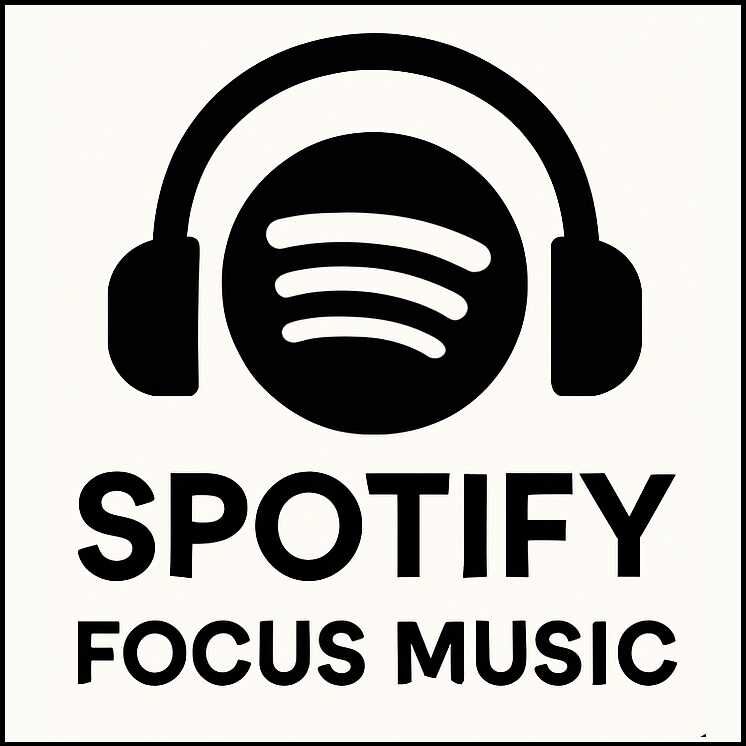“The body is a machine. The mind is a storm. Music is the bridge between them.”
Introduction: Where Sound Meets Strength
Sport is more than muscle. It is rhythm. Precision. Endurance. The repetition of movement shaped by the repetition of thought. No great athlete moves without mental clarity — and nothing sharpens the mind like music.
In moments where the stakes are measured in milliseconds or millimeters, music becomes a secret ally. It is the unspoken coach, the silent pulse that aligns breath, heart, and intent.
Focus music for sport isn’t just about hype or motivation. It is about control — of energy, of timing, of self. And when used right, it transforms performance from effort into art.
Chapter 1: The Science Behind Music and Athletic Focus
1.1. How Music Affects the Brain and Body
Scientific research over the past 30 years has revealed that music can:
-
Regulate heart rate
-
Improve motor coordination
-
Enhance endurance
-
Increase concentration and emotional resilience
-
Decrease perception of fatigue
From the auditory cortex, signals travel to the motor cortex, limbic system, and prefrontal cortex — activating both physical performance and mental attention.
1.2. The Role of Brainwave Entrainment
Just as in study or work, alpha (8–12 Hz) and beta (13–30 Hz) waves play a central role in sports. Alpha waves are dominant during fluid, automatic motion — like a tennis rally or long-distance running. Beta waves support alertness and reaction — needed in weightlifting, sprinting, or high-pressure competition.
Music with steady rhythm and clean frequency structure can help entrain the brain into these optimal states.
Chapter 2: When and Why Music Matters in Sport
2.1. Pre-Workout: Mental Priming
Before a session or match, the right music can:
-
Elevate mood
-
Lower anxiety
-
Improve neuromuscular readiness
Athletes use playlists to “set the zone” — creating a psychological barrier between the outside world and performance mode. This ritual fosters consistency and confidence.
Genres:
-
Future garage
-
Downtempo trap
-
Instrumental hip-hop
-
Epic orchestral tracks
2.2. During Training: Focus and Flow
During physical activity, music provides:
-
Rhythmic guidance for pacing
-
Auditory masking of distractions
-
Energy regulation via tempo and intensity
A 130–150 BPM range is ideal for high-energy workouts. Slower tempos (90–110 BPM) suit focused strength training or mobility work.
2.3. Recovery and Visualization
Post-session, music helps the body shift into parasympathetic mode (rest and digest). It also supports mental rehearsal, allowing athletes to visualize technique and success.
Genres:
-
Ambient
-
Cinematic piano
-
Soft electronic textures
Chapter 3: Best Music Genres for Athletic Focus
3.1. Instrumental Hip-Hop and Chillhop
With head-nodding beats, lo-fi textures, and a balanced tempo, this genre creates mental clarity without overstimulation.
Best for:
-
Warmups
-
Mid-intensity cardio
-
Technique drills
Why it works: The absence of lyrics reduces cognitive interference, while beats maintain attention.
3.2. Electronic (Techno, House, Future Garage)
Driving, repetitive, and precise — electronic music mimics the discipline of movement. Artists like Kiasmos, Burial, or ODESZA create sonic spaces perfect for entering “the zone.”
Best for:
-
HIIT
-
Long-distance running
-
Circuit training
-
Focused strength work
Why it works: Repetition = trance. It mirrors repetitive movement, supporting long attention spans.
3.3. Neo-Classical and Orchestral Builds
Not all sports moments are aggressive. Some are deeply introspective — where intensity is internal, not external.
Neo-classical music blends emotion and structure. It’s ideal for:
-
Visualization
-
Stretching
-
Calm focus before precision sports (e.g., archery, shooting, golf)
3.4. Ambient and Binaural Beats
Sometimes, silence isn’t enough. Ambient music provides space without clutter. Binaural beats gently nudge the brain toward focus.
Best for:
-
Mindful movement (yoga, pilates)
-
Post-workout recovery
-
Meditative visualizations
Chapter 4: The Characteristics of High-Performance Focus Music
Effective sport-focused music is not always loud or intense. It is engineered for attention.
| Characteristic | Purpose |
|---|---|
| Predictable structure | Prevents disruption of concentration |
| Minimal vocals | Reduces cognitive distraction |
| Rhythmic clarity | Aligns movement with time |
| Emotional neutrality | Avoids unnecessary emotional swings |
| Dynamic balance | Adapts to changing energy states |
“Great music for sport does not scream — it whispers in perfect time.”
Chapter 5: Using Focus Music Strategically in Sports Practice
5.1. Build Task-Specific Playlists
Different workouts require different brain states. Craft separate playlists for:
-
Warm-up
-
High-intensity intervals
-
Cool-down / stretch
-
Visualization
Use tempo and mood as the organizing principles — not just genre.
5.2. Use Music as a Trigger
Start every session with the same track to create a neural anchor. After a few weeks, that song alone will start to shift your mind into performance mode.
5.3. Avoid Overstimulation
Music that’s too complex or emotionally intense can:
-
Elevate cortisol
-
Disrupt rhythm
-
Reduce motor control
Save your favorite anthems for competition or personal records — not technical sessions.
5.4. Train Without Music Occasionally
True focus is internal. Use music to guide, but train without it sometimes to build raw attention resilience.
Chapter 6: Examples by Sport Type
| Sport Type | Ideal Genres | Example Artists / Styles |
|---|---|---|
| Long-distance running | Progressive house, future garage | Jon Hopkins, Moderat |
| Weightlifting | Minimal techno, trap beats | REZZ, Rival Consoles, NF-type instrumentals |
| Combat sports | Dark electronica, cinematic | Hans Zimmer builds, Zola Blood |
| Yoga / mobility | Ambient, neoclassical | Max Richter, Hammock, Olafur Arnalds |
| Sprint training | Bass-heavy EDM, aggressive hip-hop | RL Grime (instrumental), Drum & Bass |
| Team warm-ups | Upbeat lo-fi, motivational downtempo | Chillhop Music, Lofi Girl (no lyrics) |
Chapter 7: Beyond the Gym — Mental Training with Music
Mental strength is built in silence, repetition, and discipline. Music can amplify these conditions.
Use low-intensity music during:
-
Breathwork — slow ambient textures support parasympathetic activation
-
Cold exposure — droning soundscapes help transcend discomfort
-
Visualization practice — soundtracks train the nervous system for focus under pressure
Even injury recovery benefits from music, as it helps regulate pain perception and motivation.
Chapter 8: Common Mistakes with Sport Focus Music
❌ Too Many Lyrics
Songs with strong lyrical content can disrupt internal dialogue and focus.
❌ Inconsistent Volume
Frequent dynamic changes cause your nervous system to spike or drop — draining energy.
❌ Overuse of Hype Tracks
Using aggressive music every day leads to desensitization. Save them for max lifts or competition.
❌ Neglecting Personal Resonance
Just because a playlist is popular doesn’t mean it fits your rhythm. Always test and refine.
Conclusion: Train the Mind Through the Ear
Sport is not won in the body — but in the moment before the motion. In the thought before the throw. In the breath before the sprint.
Music can carry you there.
Not all sound is noise. Not all silence is stillness. Between the two lies the space where focus lives — and that space is shaped by music.
“To train with focus is to enter a world where every note sharpens will, and every rhythm carries you closer to mastery.”
Let the world fade. Let the breath slow. Let the music begin.
And move — with intention.

